To get replies, a cold email has to be short yet powerful, and intriguing for the recipient. That’s why each part of this short message has to deliver value and play a crucial communicative role.
At Woodpecker, we get an inside look at what determines whether a message will have a high response rate or not. Using what we’ve learned, we’ve put together these 6 tremendously important steps to write effective cold emails for sales.
After reading them, you’ll no longer sit in front of your laptop and stare at a blank page, trying to figure out the right words. You’ll know how to write reply-worthy cold emails.
To get a good grasp of it, let’s take a closer look at what a cold email is and what it’s not.
What is a cold email?
Cold emails are a way to start and maintain business relationships.
To get a better understanding of what they are, think of how business relationships develop in the offline world. Usually, everything starts with a conversation.
Here’s one of the possible scenarios: a salesperson goes to an industry conference or trade to meet new customers. During the event, they look for opportunities to start a conversation. But their goal is not to pitch their offer or brag about their company. They want to break the ice and start a dialogue. They aim to learn more about their prospect’s business and build a rapport with them.
The same principles apply to outbound sales efforts, where cold emails serve as a means to initiate conversations in the online realm. This approach effectively allows you to connect with individuals who are likely unfamiliar or have limited knowledge about your company, making them what we refer to as “cold” leads, given that it’s their initial exposure to your business.
The goal of a cold email is not an instant conversion, but building the relationship from strangers to business partners. In other words, to warm those leads up little by little.
How has cold emailing changed?
Cold emailing has come a long way since it was first used in sales.
In the olden days, the sole purpose of sending cold emails was to pitch the offer. Usually, one generic message was sent to a large group of prospects without any personalization or segmentation whatsoever.
Since the method was new and not many people did business via email yet, such a mass-sales-oriented approach actually worked great as a lead generation method. But the more copy-paste type of messages flooded the prospects’ inboxes, the less effective this approach became. People grew sensitive to the salesy tone and the generic character of cold emails.
The approach to sending cold emails has evolved significantly since then. Messages with an aggressive sales pitch are now bound to fail. Also, impersonal, one-size-fits-all type of emails are no longer effective.
Nowadays it’s all about building a relationship with a prospect. Cold email copy should be focused on the recipient, not your product or service. Put yourself in their shoes. From the very first email, a prospect should feel that you understand their business and the challenges it entails:
- Don’t jump to making the deal straightaway.
- Let your prospects tell you more about what they struggle with in their daily work.
- Then show them how these processes can be improved or done more efficiently.
Still, that doesn’t mean you must write every single cold email completely from scratch. That would be somewhat unrealistic, especially if you do it at scale.
You can instead standardize your outreach messages through a template builder like HubSpot’s, then tailor them to each particular prospect via personalization tokens.
Personalization is key to winning prospects’ interest these days. Therefore, prospecting also plays an important role in the overall success of your cold email campaign.
Furthermore, personalization can now address the exact reply of your prospects through different versions of a follow-up and defining a trigger action that pings it.
The more you learn about your prospects, the easier it will be for you to craft a message perfectly tailored to the particular prospect segment.
How to write a cold email
I’d recommend going step by step through the whole guide.
Step 1: Edit the “from” line
It may come to you as a surprise that editing the “from” line is featured as a separate step here. We usually set it up for a new email address, and after this, we don’t pay much attention to it.
Still, the “from” line is as much a part of a cold email as the body, and that’s because it plays an important role. It shows the message recipients exactly who sent the email. It’s a part that forms their first impression. What follows is that they decide whether to open the message and read it or put it in the trash and forget it.
Remember that your prospects don’t know you yet
As cold email senders we’re strangers. So it’s natural for them to harbor some suspicion towards our email. Their initial focus often falls on the “from” line, where we have the chance to either gain their trust or scare them. The first impression conveyed by the “from” line can determine whether they choose to open our email or simply delete it outright.
For that reason, it’s a good idea to review what’s in your ”from” line before sending a new cold email campaign.
The “from” line can take many forms. We can edit it anytime we want. We can mix and match the form of our “from” line every time we send a new campaign, choosing different possible forms.
What are possible issues with your “from” line?
There are at least 5 possible forms of from line.
A. First name (Cathy)
B. First name + Last name (Cathy Patalas)
C. First name + Last name, Title (Cathy Patalas, Head of Marketing)
D. First name + Company name (Cathy at Woodpecker.co)
E. First name + Last name + Company name (Cathy Patalas at Woodpecker.co)
The right “from” line for your cold outreach campaign depends on the context of your message, your target group and the goal you want to accomplish with your email, be it marketing cooperation, influencer outreach, or a possible sales deal.
There are a couple of rules when it comes to choosing the best “from” line that fulfills your goal and fits into the context of your email, as well as the list of contacts who will receive your messages.
Rules to follow while editing a “from” line:
- be consistent – don’t let it diverge in tone and style from the rest of your email. If you use an informal tone throughout your email, maybe you can include the first name + company name, and you’ll be all set.
- consider your prospect‘s perspective – what would you expect to see in your inbox if you were one of your prospects? What’s their average style of communication? Try to mimic it when writing your “from” line.
- find your own line that fits your prospect‘s expectations – don’t just blindly follow some advice you found on the web. Think for yourself. You’re the one who knows your prospects best and knows what they expect to see.
- think who your prospects would be the keenest on talking to – be specific about that. Use that info to edit your “from” line.
Those are just a few rules. If you need more clarity on what to write, check the stand-alone blog post about crafting “from” lines: What Should Be the ‘’From” Line of My Cold Email? >>
Step 2: Write an appealing subject line
A cold email subject line could be seen as the key that unlocks the door to our message. Our prospects form their first impression of us while reading the subject line. That’s why we need to make it a good one.
A poorly written subject line may make the addressee biased against us and our email. They might decide not to open the email, or worse, manually mark it as spam which may cause problems with email deliverability.
We can avoid such situations so long as we stick to these rules:
- consider your prospect‘s point of view – think what kind of benefit your subject line promises to the prospect. What’s in it for them after opening your email? Does it answer their needs or appeals to their curiosity? Make it about them, not about you.
- personalize it – again, the subject line isn’t a place for self-promotion. Quite the opposite, it’s a place where you should prove to the addressee that you carefully planned to contact them. You should assure them you’re not a spammer who sends tons of identical emails to people and waits to see what sticks.
- intrigue them – don’t spill the beans just yet. Pique their interest. Engage their attention by making them reflect on a problem they may have. Or try using a little bit of flattery to catch their attention. As one web design Melbourne agency found out after testing 7 months of sending cold emails, a hint of flattery goes a long way. But don’t overdo it. Listing all of their recent activity is a step too far. For example, refer to a pain point about TikTok visibility, and only then mention TikTok recharge.
- sound human – you’re writing to a living and breathing human being, and thus, you shouldn’t turn into a bot. Avoid sounding ‘salesy’ or too formal. Your subject line should have a casual, friendly and natural flair to it. Unless you know how to achieve this, try imagining you’re addressing a specific person you know, for example, your colleague.
- tie it to the rest of the email – this relates to the earlier points discussed. It’s crucial to ensure that your subject line aligns with the content of your message. Avoid resorting to clickbait strategies in your subject line, as they will only irritate your prospects and negatively impact your outreach efforts.
Here’s more about composing subject lines:What Subject Line Will Make My Addresses Open My Cold Email? >>
What are some good examples of cold email subject lines?
The best ones we’ve come across at Woodpecker include:
-
- {{FIRST_NAME}}}, there is a more efficient way to do X
- I have an idea on how to improve your X
- Have you thought about switching X?
- Want to scale up X at {{COMPANY}}?
You’ll find more examples in this blog post: 15 Best Sales Email Subject Lines We’ve Come Across >>
An interesting thing we’ve noticed is that these subject lines follow three “need” patterns. They either refer to a prospect’s need to improve, need to change, or need to innovate. Touching on what prospects care the most plus personalization is what makes these subject lines so successful.
I recommend that you A/B test your subject lines to find out which one brings the highest open rate. Here’s a step-by-step guide on how to do A/B tests >>
Sidenote: Woodpecker can help you out by sending your emails automatically one-by-one. You get to A/B test subject lines & email copy so you can see what makes your prospects engage with your messages. You can test it all out on a free trial here.
Step 3: Come up with a brilliant cold email introduction
Right after you persuade your addressee with the ‘from’ and subject lines to actually open your message, you’re halfway through. Now you’ve got 3 seconds to hold their attention and make them read further than the first two lines. And that’s why you need an intriguing introduction.
It’s difficult to start a cold email. What we tend to do is talk about ourselves and the company we work for. It may either be because we don’t know how to start or we desperately want to close the sale with our first email. But I’m here to tell you that this is definitely not a winning strategy.
Then what should a cold email introduction look like?
A cold email introduction shouldn’t be longer than 2-3 sentences. It’s not supposed to introduce you or your company to the prospect. Instead, it refers to the message receiver, their expertise, achievements, work, and their company. That’s how we catch their attention.
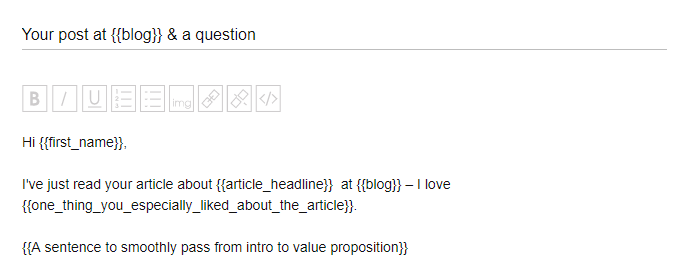
A hint of flattery may be the way to go. But don’t overdo it. Listing all of their recent activity is a step too far.
Stay in the professional field and keep everything focused on the business reasons for your interest in reaching out to them.
You may also use those few sentences of cold email introduction to make it a part where you ask about their problems. Or better, you can talk about the ones you’ve noticed they have that you can take care of.
Above all else, treat the introduction as an opportunity to show your prospects that they received the message because you chose to contact them specifically. You’ve done your homework. You didn’t decide to reach out to them on a whim. You were deliberate about it.
That’s why you should take some time to research the company before you write a cold email.
If it’s still complicated and you don’t know how to start your cold email, you’ll find this helpful: Cold Email Intro, or How Should I Start My Message? >>
Step 4: Include some value in your pitch
Here comes the part where you tell the message recipient what you want from them – your pitch.
So how do you write a good cold email pitch?
We know we should have a ready-made formula at hand to use whenever we talk about the product/service we offer. It should be spiced up with the benefits so that a potential buyer has a clear idea of what it is that we sell. However, that’s not the best approach when we write a cold email. Using an interactive pitch deck can help structure your message more effectively.
Avoid salesy pitches
In a B2B sales email, we have to be subtle with our pitch. We don’t write it to close one more sale. We write it to start a unique business relationship with a potential buyer. And that calls for a personal approach.
Always put your prospects in the center of your pitch. Provide as much value to them as you can. Find out what problems they may face that you can help them with. Use storytelling to show them how you might relieve them of those problems. Prove to them that you’re here to help and learn.
Focus on benefits, not features
Don’t rely on a list of product features. Stop yourself from writing about the monetary value you offer. Instead only highlight the benefits your prospect may gain from it. Remember to be specific, since vague benefits will dilute your message.
It may be tricky at first, but when you really put yourself into the customer’s shoes, you’ll feel it. Here’s some advice on how to change the perspective with examples:Features vs Benefits – How to Present Your Product in a Cold Email? >>
Your pitch should also be seamlessly linked to the previous part of your email. It should seem just like a natural continuation of an ordinary conversation. By all means, avoid making it forced and salesy.
Here’s more on how to do that: Value Proposition – How to Tell My Addressee What I Want from Them? >>
Step 5: End your cold email with a call-to-action
You’re almost done. You just need to write a call to action (CTA) that will persuade your prospects to do what you ultimately want them to do with your cold email. It may be scheduling a Zoom conversation, giving you feedback, replying to you, etc. Anything you’re ready to take care of. Any action you ultimately want them to perform. Keep it simple and straightforward.
To make sure your recipients will take action, your CTA should:
- Express the purpose of your email – the CTA should clarify the aim of your email in a single sentence. To put it differently, it should clearly show the addressee what you want them to do.
- Be short and to-the-point – the CTA shouldn’t take more than a single sentence. You should be as succinct as you can. It shouldn’t be blurry either.
Ask for something your prospect can do now
Don’t ask for too much – a request for a simple action or a quick response may probably work better than an invitation for a 30-minute call. Start small. Even if eventually you will invite your prospects for a meeting, perhaps the first email they will ever get from you is not the place to do that.
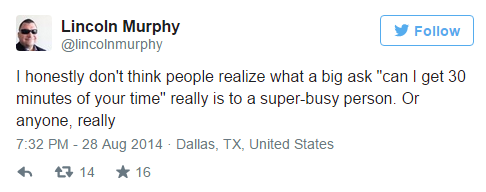
Get some CTA ideas from this post: Perfect CTA, or How to End Up My Cold Email? >>
Step 6: Polish your cold email signature
And last but not least, the often ignored signature. The signature is a fully-fledged part of your message and you cannot ignore it. It should tell your recipient who you are and where they can find more information about you and/or your company.
A well-constructed signature can help you shorten the email body and make the message more digestible and recipient-centered.
A few tips to keep in mind when creating your email signature:
- you want it to make you look trustworthy – too little information and no hints on where to find you will definitely lower your chances for a response.
- include only necessary information: cut out information that just takes space, but doesn’t bring much value. Sometimes your phone number may be crucial, but other times it’s completely unnecessary. Think about the usefulness of each piece of info in the signature. Delete the one that’s useless in your email campaign.
- if you decide to use HTML, make sure it’s clean – a messy HTML signature may cause some deliverability issues. That’s because your message is short. If the signature includes a lot of HTML, it can disrupt the text-to-HTML ratio. If you don’t have anyone who can check your signature HTML and clean it up, it’s safer to go for a simple text signature.
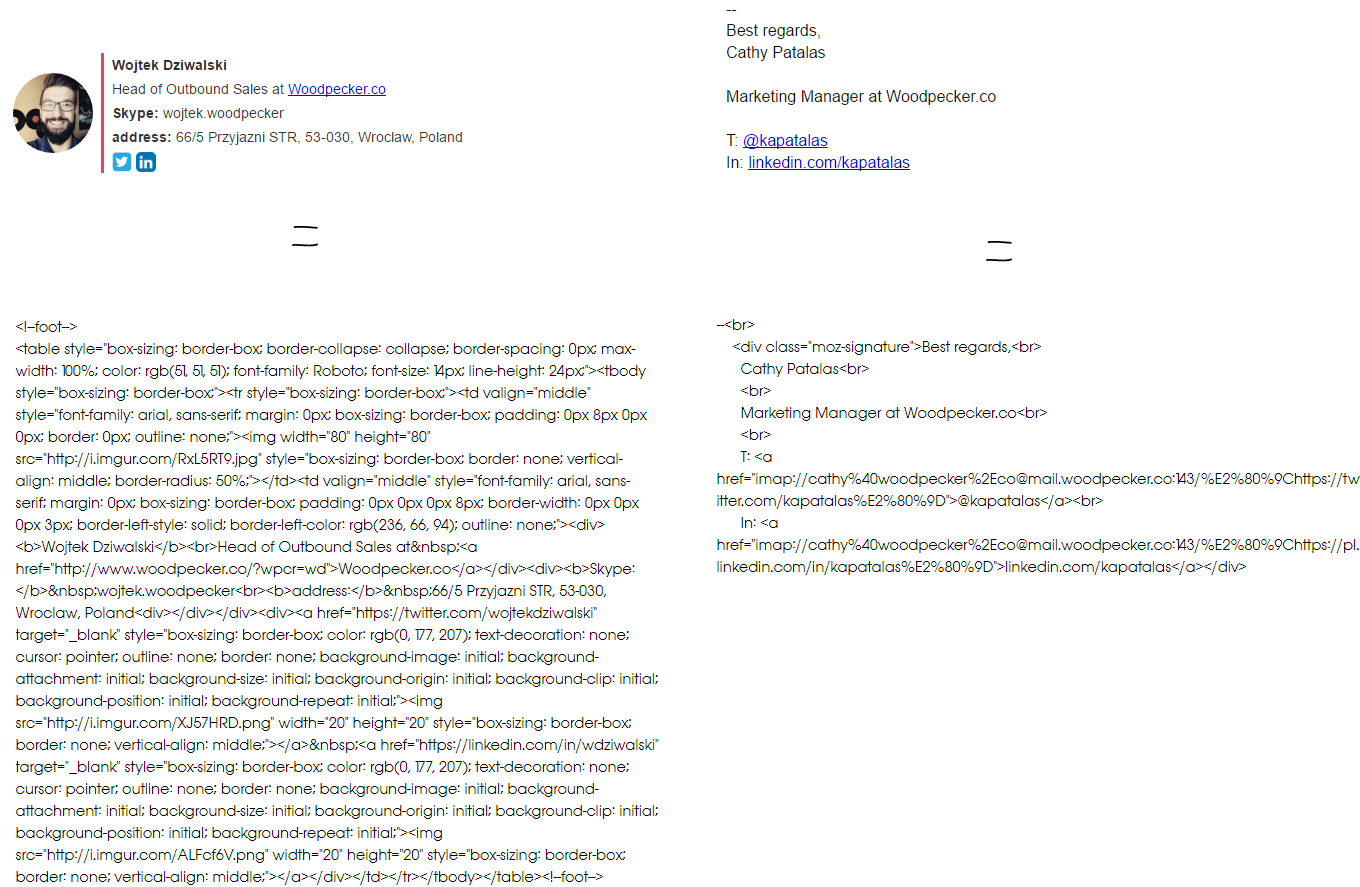 I spent some time on my signature some time ago, so you can click the following link to see what I figured out then: A Little Big Thing – What Do I Put in My Email Signature? >>
I spent some time on my signature some time ago, so you can click the following link to see what I figured out then: A Little Big Thing – What Do I Put in My Email Signature? >> If you’d like to see some more good examples of sales email signatures, read this article: Best Signatures for Sales Emails: Let’s Analyze What Makes Them Effective >>
You can create a signature with our email signature generator for free. All of the templates are deliverability-friendly, which means there’s no messy HTML there that might send your emails to spam folders.
How long should a cold email be?
It should be short, 2-5 sentences of no more than 200 words in total. Data suggests that 50-125 words is the optimal number.
That’s all you need to spark someone’s interest and start a conversation.
Hardly anyone would read a long email from a stranger, yet many people still send lengthy pitches, describing their company and product or service.
Be respectful of your prospects’ time. Keep it short.
How to follow up on a cold email
Even a perfectly written cold email may not be enough to engage your prospects. Sometimes they may miss your email, forget to reply or simply don’t feel interested enough to set up a call with you. Don’t worry, though, this is a totally normal thing. That’s why you should always follow up after getting no response.
One follow-up email is a must in your cold email strategy, but the optimal number is two or three. Try not to treat follow-ups like reminders that you’re awaiting the prospect’s response. Sneak some extra value in them: link to a relevant case study or invite prospects to an upcoming webinar.
Ok, but sending just one personalized cold email alone to, let’s say, 50 prospects a day sounds like a lot of work to do, let alone following up and replying.
Indeed, handling all of that manually on a big scale is a nightmare (been there, done that). Fortunately, you can automate this process and make your life easier.
How to send your first cold email campaign
1. Create a new campaign
Click ADD CAMPAIGN to start.
2. Add your campaign name
…and choose the email address you’ll be sending from.
 3. Set the sending limit
3. Set the sending limit
Click on the gear icon in the top right corner and specify how many prospects you wish to contact a day. I recommend you to start with no more than 50 – this means 50 new people will be contacted in one day in this campaign (the limit doesn’t include follow-ups).

And since you’re already here, check Use prospect’s timezone if available if your prospect list includes countries. Now your contacts will get your message in a time slot adjusted to their waking hours, not yours.
If your mailbox or domain aren’t warmed up yet, take care of that first – Woodpecker can do it for you automatically.
4. Write the email
Type in your subject line and the content of your email. After reading this blog post, you already know how to write them in a way that will catch your recipients’ attention.
Use snippets to personalize your messages. This way each prospect will get the feeling your email is relevant to them.
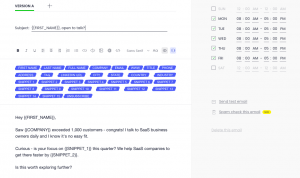
5. Schedule the sending time
Decide when you want your emails to be sent by ticking boxes next to the email editor.
6. Add follow-ups
Don’t ignore follow-ups – they’re your chance of getting up to 22% more replies. To add follow-ups, click ADD STEP and follow steps #4 and #5, leaving the subject line empty to send them in the same email thread.
When someone replies, Woodpecker will automatically stop the sequence for that prospect.
7. Add your prospect list
At this point you can import it from a file, add the prospects manually, or use one of our integrations with the most popular prospecting tools or Google Sheets, or even free tools like Zoho CRM.
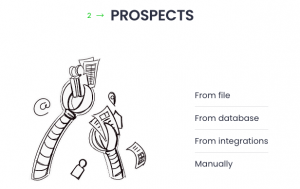
8. Send a test campaign
Go to the SUMMARY and send yourself a test campaign to make sure that the emails look good and all the links you included work.
9. Hit RUN to start
…and you’ve just started your first cold email campaign in Woodpecker. Told you it was easy.
Give it a go:
Ready to start?
Short, highly personalized cold emails dedicated to a specific audience are a great way to start some new business relationships and get more new hot leads for your company. And if you add a sequence of automated follow-ups, you’ll get a pretty powerful lead generation machine.
Hope my tips help you write cold emails that hit the right note. Good luck!
FAQ
What has changed in cold emailing recently?
Cold email recipients have become accustomed to generic and sales-oriented messages. The way we send cold emails has changed significantly from the early days of electronic communications, when the same message was copied and sent to large groups of contacts without personalization and segmentation of potential customers. Back then, this approach was something natural. But the volume of cold emails sent daily has changed significantly, making recipients more sensitive to generic messages. Unpersonalized, “universal” emails are no longer effective.
What to include in cold email?
The cold email that really works should consist of a few parts. Before you send your message, remember to edit the “from” line. We don’t know each other and the “from” line is a good place to start an introduction. Then write an intriguing subject line that will pique the recipient’s interest and get them to open the message. Think of the subject line as a key that opens your email. If the message gets opened, that’s great. Now it’s time to write an introduction that grabs the recipient’s attention – show them you’ve done research and provide some value. Focus on the recipient’s problems and how you can solve them – it’s about the recipient, not you. End your email by telling them what you want them to do, and provide a clear CTA. Remember to include a professional email signature, as this can save you space in your cold email copy by putting all the important contact information in it.
How to send first cold email campaign?
To make your cold emailing effective, use a simple and intuitive tool like Woodpecker. First, create a small prospect list, a warmed-up email address, and a free trial account for Woodpecker Cold Email. Then create a new campaign, add a send limit, write your email and set the send time. Don’t forget to include follow-ups, as they can improve your response rate by up to 40%. Add your prospect list and send a test campaign to make sure everything works before you click “RUN” to start.
How can I write a cold email that captures a prospect’s attention using a cold email template?
Utilize a cold email template as a starting point, but customize it with a catchy subject line and a personalized opening line. Briefly explain your service’s benefits, focusing on a specific pain point relevant to the prospect’s company. Include social media links or best Instagram captions or Instagram Story Viewer features or social proof for credibility, and end with a clear call to action.
What are some key tips for creating an effective follow-up email if I’ve contacted the wrong person?
If you realize you’ve emailed the wrong person, politely acknowledge the mistake in your follow-up. Re-emphasize the value proposition of your service and how it addresses their pain points. Use this opportunity to ask if they can direct you to the appropriate contact within their organization.
How can I ensure my cold email stands out to potential customers using cold email software?
Leverage cold email software to personalize and automate your email campaigns. Craft a compelling subject line and personalize your message by including the recipient’s job title or LinkedIn profile. Highlight how your service addresses their pain points and include a clear call to action.
What should I include in my email signature for cold emails?
Your email signature should include your full name, position, company name, and contact information. Optionally, add a link to your LinkedIn profile or company website. Ensure your email account settings are configured correctly so your signature appears professional and consistent in every email.
How can I effectively use a call to action in a cold email?
Your cold email CTA should be direct and encourage a specific action, like scheduling a brief call. Ensure it’s related to the pain points discussed and provides a clear next step. A well-crafted CTA can significantly increase the chances of turning a cold contact into a potential client.
What are some strategies for addressing pain points in cold emails?
Identify key pain points of your target audience and address them directly in your email. Explain how your service offers a solution, using case studies as social proof. This approach shows that you understand and can address their specific challenges.
How should I approach the email format in cold emails?
Keep the email format simple and reader-friendly. Use a cold email template as a guide but personalize it. Short paragraphs and bullet points can help highlight key points effectively. Ensure your email signature is professional and includes all necessary contact information.
What are some effective ways to start writing unsolicited emails?
Begin with a strong, personalized opening line. Reference something specific about their company to show you’ve done your research. Clearly state the purpose of your email and how your service can add value. Keep the tone professional yet approachable to engage the recipient right from the start.
READ ALSO

Cold Email Statistics Based on Sending Over 20M Cold Emails
Over the span of 2 years, Woodpecker has grown a lot faster than we’ve predicted. We have 1000+ customers on board who come from 52 different countries. But what’s more important for today’s blog post, Woodpecker has sent way more than 20 million sales emails throughout all this time.
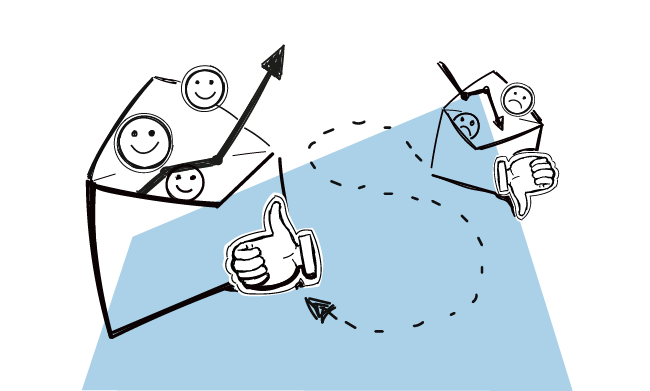
From Horrible Cold Email to Winning Cold Email: Two Real-Life Examples
Writing a good cold email is harder than it seems. In this blog post we’re showing you real-life examples of good and bad emails. Use them for inspiration when you’re going to create your own.

My Open, Reply or Interest Cold Email Metrics are Low, What Can I A/B Test?
Cold outreach needs a lot of experimentation before you get it right. You can tinker with cold email copy, subject line, CTA, and other elements to optimize your cold email. However, how do you know what to focus on?

